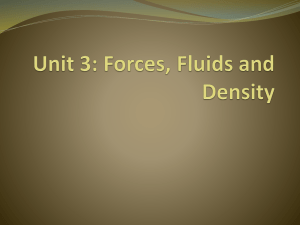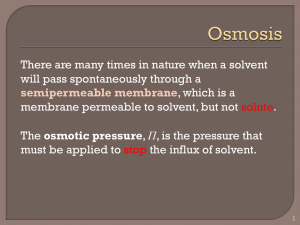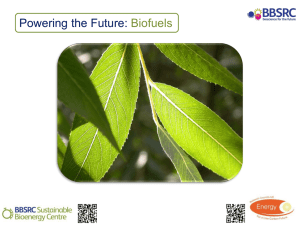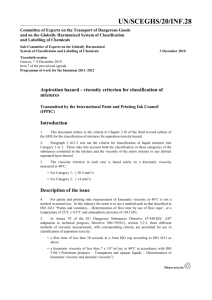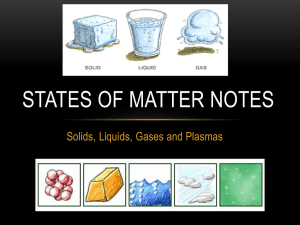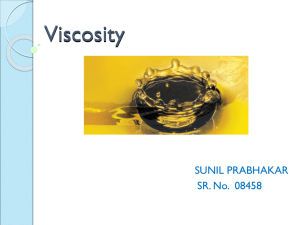Science 8: Unit A: Mix and Flow of Matter
advertisement
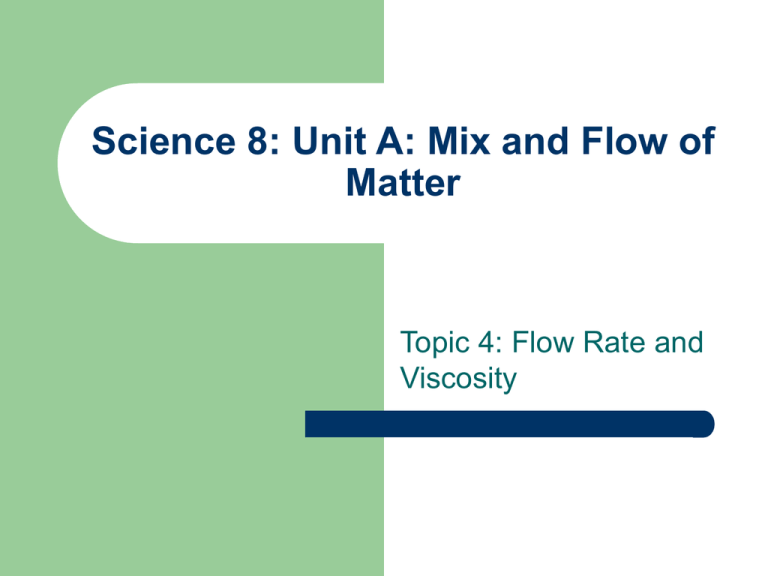
Science 8: Unit A: Mix and Flow of Matter Topic 4: Flow Rate and Viscosity Viscosity - a liquid’s resistance to flow (its thickness or thinness) is called viscosity. - a thicker a liquid is, the more viscous it is and the higher viscosity it has - viscosity is a property in liquids and gases (in which it increases and decreases differently than in liquids), NOT IN SOLIDS. - the time it takes for a fluid to flow over a set distance is called its flow rate. Product Performance and Viscosity Viscosity is measured precisely in many industries (paint, cosmetics) Nail polish goes on smooth and dries to a solid, while mascara is thick and dries quickly. The viscosity of these liquids is controlled by a solvent A solvent keeps the ingredients of the mixtures dissolved, then it evaporates. Product Appeal and Viscosity Heat affects viscosity because it thins out the liquid, making it less viscous (ie. thinner). Food manufacturers consider viscosity in order to make their product marketable (a syrup that is too runny will not sell) Applications A liquid for stripping paint off furniture would drip off before it had a chance to remove the paint, so the viscosity was increased to improve its performance (making it a gel). A chef will thicken or thin gravy, or sauce, by adding, or taking away more solvent (water) Mechanics must adjust the viscosity of oil depending on the season of the year. Artists change the viscosity of the paints they are using. Technicians control the viscosity of chemicals in chemical processing plants. Viscosity of Liquids The viscosity of a liquid decreases as it is heated and increases when it is cooled. This is the opposite pattern to gases. This can be explained by the Particle Model of Matter. Heat energy causes the particles to move faster and spread out. This spreading out makes the liquid less viscous. The Viscosity of Gases Gas particles flow differently than liquid particles, because they are so far apart and the attractive forces between the particles are very low. Instead of sliding past each other (as they do in a liquid), the particles of a gas are more likely to collide (increasing the resistance to flow and therefore increasing the viscosity). Temperature has a direct effect on viscosity of a gas as temperature increases, the attractive forces between the particles is less, so the viscosity of a gas increases as it is heated and decreases when it is cooled.



